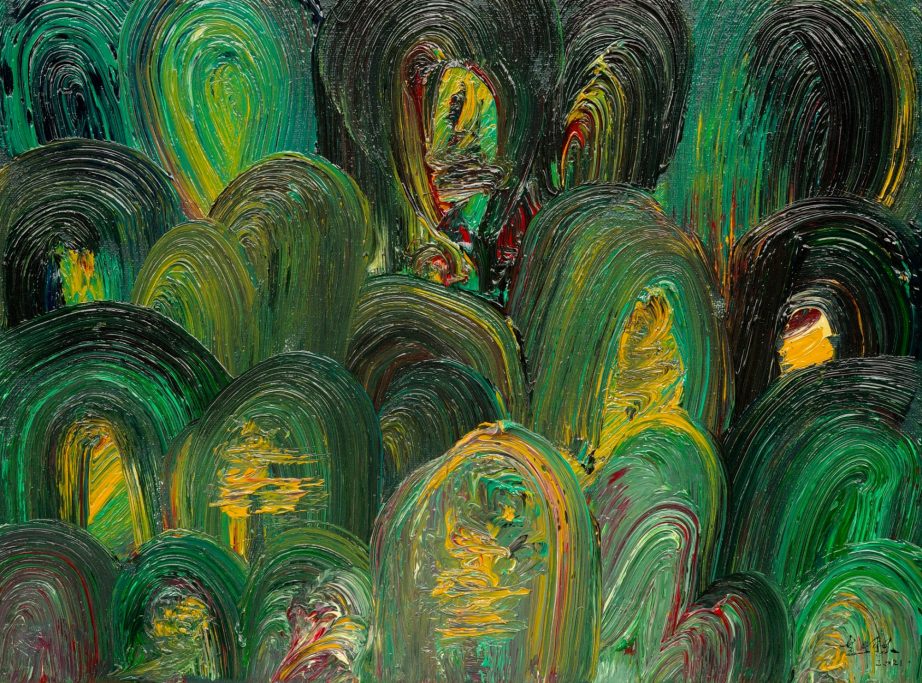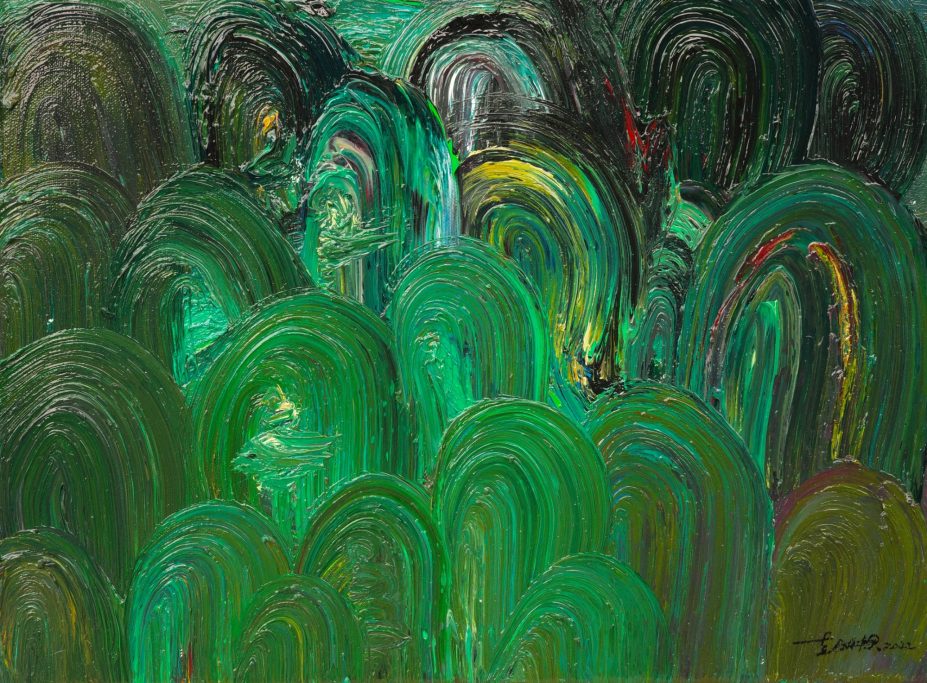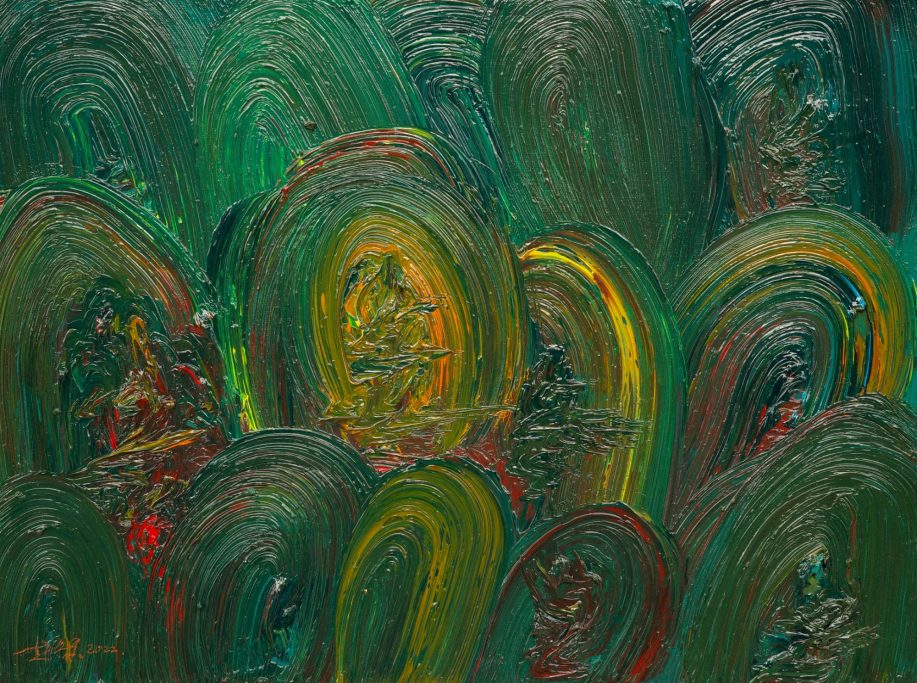During artist graduate studies, Zhao Jiu had the privilege of participating in a national project for the restoration of Dunhuang. She spent a considerable amount of time on-site in Dunhuang, gaining a profound understanding of its history and conducting meticulous observations and research on many of its grottoes. As a result, the artist has a relatively deep understanding of Dunhuang, leaving a lasting impression.
Despite many years having passed, Zhao Jiu's impression of Dunhuang remains that of primal awe: numerous caves nestled within the desert, each cave brimming with countless stories spanning millennia, intimately intertwined with the joys and sorrows of life and death.
While they may appear as mere caves adorned with Buddha statues and murals, in Zhao Jiu's perception, the tangible elements of Buddha statues and murals have faded, giving way to a greater spiritual force—a projection of the myriad experiences of humanity, the cosmos, the past, and the future.
Thus, in this series, one can perceive that the artist is less concerned with abstract expression in form but rather prioritizes intuitive sensibility. Many abstract representations stem from the most primal impressions, conveying ethereal imagery.
As for form and technique, there is little deliberation and concern, as the painter believes that excessive contemplation would weigh heavily, burdening both the artist and the viewer. Moreover, this primitive abstract expression more effectively communicates the artist's understanding of phenomena and the innermost voices of their being.
©ZII. All rights reserved.
We need your consent to load the translations
We use a third-party service to translate the website content that may collect data about your activity. Please review the details in the privacy policy and accept the service to view the translations.




